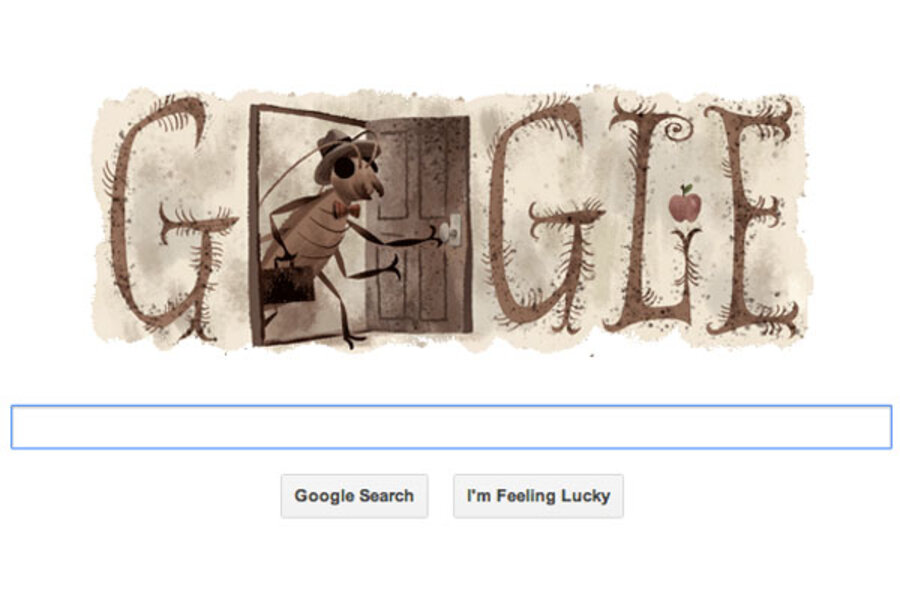Franz Kafka: Why a cockroach crawled into the Google doodle
Loading...
“One morning, upon awakening from agitated dreams, Gregor Samsa found himself in his bed, transformed into a monstrous vermin.” And thus begins Franz Kafka’s novella “The Metamorphosis,” which takes readers through Mr. Samsa’s surreal transformation from traveling salesman to cockroach – one of the hardiest and arguably most repulsive insects.
Wednesday’s Google doodle commemorates what would have been Mr. Kafka’s 130th birthday with a cockroach – cap and bow tie on, antennas back, briefcase in hand – ready to meet the world. The irony is: Kafka’s created man-turned-cockroach would never have been so brave.
Kafka was born on July 3, 1883, into a well-off family in Prague, which at the time was the capital of Bohemia in the Austro-Hungarian Empire. The young Kafka had a turbulent relationship with his father. He grew up as his parents’ only surviving son. Neither the author’s mother nor father understood their son’s lack of business ambitions, and his compulsion to write. Kafka and his father had a particularly turbulent relationship, which the author would later describe in his “Letters to My Father” – a work of over 100 pages detailing his father’s authoritarian demeanor and his mother’s demure character.
At the University of Prague, Kafka studied law, and went on to work as a lawyer – a job he would refer to as his Brotberuf, or “bread job” – while he wrote in the evenings. This arrangement, along with his father’s often-lofty expectations for his son’s future, frustrated Kafka, who wanted to focus on his writing.
In 1917, Kafka was diagnosed with tuberculosis, and finally retired in 1922. Two years later, he died, severely weakened to the point where it was difficult for him to write. Kafka left instructions for his friend Max Brod that all of his works should be destroyed, wishes that Brod famously ignored, bringing Kafka posthumous celebrity.
Nearly 100 years later, the once obscure author’s name has enough bearing to merit a Google doodle. This might be a trite marker of distinction, but the choice of a cockroach to celebrate Kafka’s birthday is no mistake. The author’s description of the cockroach, née Gregor Samsa, as he crawls around his room, feeling guilty and inadequate, is a reminder to us all to ask the obvious question that Samsa never thought, and Kafka never circulated: Why?
“The Metamorphosis” is a warning to us all that unquestioningly accepting our circumstances, while sometimes necessary to preserve sanity, is degrading. In the novel, it is not just Samsa, but those around him as well, who have lost their sense of perspective, and ability to wonder why things are the way they are. Kafka’s “The Metamorphosis” takes an absurdly incomprehensible situation – which we might now refer to as “kafkaesque” – and offers the reader two interpretations: the literal, and the metaphorical. With the latter take on the novella, the cockroach that never left his room, and died, paralyzed with fears of inadequacies, serves as a call for awareness of, and curiosity about, our daily condition.
“Kafka is important to us because his predicament is the predicament of modern man,” British poet W.H. Auden wrote.
That is not to say that we might all turn into cockroaches, but we, like the cockroach, might forget to question our circumstances.






